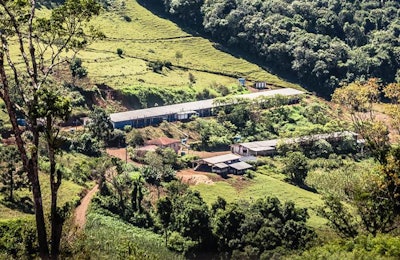
Can Brazilian poultry products shipped to overseas markets benefit consumers and poultry producers in importing countries, and reduce the environmental footprint of the industry as a whole?
According to the Brazilian poultry association, ABPA, Brazilian poultry meat can help satisfy consumer demand around the world, and complement, rather than compete against, local producers. The proximity of raw materials to centers of Brazilian production, and modern production methods, mean the environmental footprint of imported Brazilian chicken meat is smaller than that of local production.
These were among the messages of ABPA at the Paris food show SIAL late last year, to which it brought 17 broiler, egg and pig companies to help promote the quality of Brazilian protein and to argue that Brazilian producers do not have to be seen as a threat, but rather partners that can help local producers and markets function better.
European question
Where the European Union is concerned, ABPA Executive President Francisco Turra argues: “In the case of the EU, imports from Brazil complement the offer of products that local producers cannot supply, such as chicken breast. Our exports to the EU represent 4 percent of all European consumption of chicken meat.”
He continued that the figures showed that Brazil was far from dominating the European market, and that with Brazilian imports, the European industry could produce enough to export and not overload its own market. If the European Union were to become self-sufficient in its preferred breast meat, how many more lower-value cuts would be produced as a consequence, what would be their value, and how many more resources would be needed?
However, Brazil is already the world’s largest poultry meat exporter, and some see its continued expansion as a threat.
Commenting last year, European poultry meat association AVEC’s President Paul Lopez said that while Europe’s trade balance by volume for poultry meat was positive, imports exceed exports in value by EUR214 million (US$229.8 million), mainly due to imports of high-value products such as breast meat from Brazil and Thailand, and that 25 percent of the breast meat consumed in Europe comes from third countries. There is already the view among some European producers that enough is enough.

While Brazilian poultry meat exports by volume were negative in some markets in 2015, overall the country exported 5.8 percent more.
Environmental impact
But what about the environment? From an environmental point of view, is it good practice to ship chicken around the world?
Where the European market is concerned, ABPA said it is more environmentally friendly to produce in Brazil and to ship to Europe than to produce locally.
Looking at total CO2 emissions per ton of poultry meat produced, Brazilian producers generate 45 percent less than those in the U.K. and 50 percent less than French producers, according to figures released by Europe’s Joint Research Centre in 2010.
But it is not simply a case of producing; product must then be shipped. Figures released by the U.K.’s Department for Environment, Food and Rural Affairs in 2008 suggest that, even after shipping, Brazilian poultry meat produces 9 percent less CO2 than poultry meat produced in the U.K.
There are several factors that contribute to this, ABPA argues. Fertile land in abundance and favorable weather mean the country is self-sufficient in the major inputs for poultry production, whereas, for example, Europe is a major feed importer.
The country has 329.9 million hectares dedicated to a variety of agricultural and livestock activities and, due to ever-increasing use of technology, the productivity rate for Brazilian grains and oilseeds has risen 3.3 times over the past 40 years. Alongside this, numerous companies have invested in improving production, and in reducing CO2 emissions and other environmental impacts. Even small producers must abide by legislation to protect the natural environment.
Countering those who argue that agricultural production in Brazil is destroying the rainforest, ABPA argues that roughly 60 percent of Brazil’s territory is composed of protected forest and scrubland – comprising more than 500 million hectares of native vegetation, and that poultry production is concentrated far from this area.

By volume, the Middle East remains Brazil’s key export market, but Asia is quickly growing in importance for Brazilian exporters.
Brazilian poultry exports 2016-17
Brazil is the world’s largest poultry meat exporter, exporting to more than 160 countries.
The country’s chicken exports are expected to continue rising in 2017. Forecasts from ABPA suggest a rise of 3-5 percent this year, up from the 2 percent increase estimated for last year when exports are thought to have reached 4.39 million tons. While volumes may have increased, the value of Brazilian exports declined by 4.1 percent in comparison to 2015, to stand at US$6.88 billion.
Looking to the year ahead, ABPA believes Mexico and China will import more from Brazil, and that there may be opportunities for increased business from those countries that have been sourcing from producers that have been hit by avian influenza and are now looking for alternatives.
The export market was the bright spot for Brazilian producers last year, as their home market was less than robust.
ABPA blames the economic crisis, falling consumption levels and the high cost of inputs. Total Brazilian poultry meat production is thought to have fallen by 1.8 percent in 2016 to stand at 12.9 million tons.
Why Brazil’s top poultry companies dominate the industry:
www.WATTAgNet.com/articles/27644


















